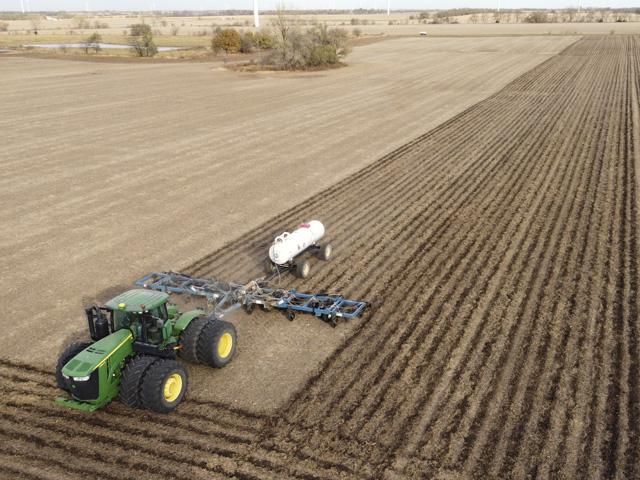
As many across the United States prepare to sit down to a Thanksgiving feast, there are those who will go without. Donating venison can help make a difference.
Crude futures tumbled 4% on the week at the close of Friday's, Dec. 12, trading, amid fears of oversupply, driven by the potential lifting of...

DTN Farm Business Editor Katie Dehlinger shares how she likes to write about creative people putting innovative ideas into practice, and why a...

Blogger Katie Pratt says the annual harvest dinner is a celebration of the farm and the people who make it possible. It brings together everyone...
P[] D[0x0] M[0x0] OOP[F] ADUNIT[] T[]
DTN Crops Editor Jason Jenkins began his journalism career full time in 2000. While his repertoire of communications tools has evolved and expanded through the years, one passion has remained constant: telling stories that connect with an audience.
Jenkins grew up on a small family farm in northwest Illinois. He attended the University of Missouri where he earned a bachelor's degree in agricultural journalism. Prior to joining the DTN team, Jenkins and his wife, Allison, founded Mill Creek Communications Services, a custom multimedia content business, in 2016. Jenkins also previously served as managing editor of Rural Missouri magazine as well as an information specialist for University of Missouri Extension. Jenkins and his family reside on a farm in Missouri's Callaway County.

As many across the United States prepare to sit down to a Thanksgiving feast, there are those who will go without. Donating venison can help make a difference.

What's your soil temperature? If it's above 50 degrees, it's not yet time to apply anhydrous.

Missouri joins Illinois, Iowa and Tennessee in declaring a population of waterhemp resistant to dicamba herbicide.

Chris Santini of Stewartsville, New Jersey, earned the Bin Buster award in the 2025 National Sorghum Yield Contest with an entry yielding 239.93 bushels per acre.

For the third time in five years, Oregon wheat farmer Steve VanGrunsven has earned the title of "Bin Buster" in the National Wheat Yield Contest with an entry of soft white winter wheat.

The 10th Annual National Wheat Yield Contest features nearly a dozen first-time winners along with some familiar names. Learn more about who produced award-winning grain from coast to coast.

In September, USDA estimated a corn crop averaging 186.7 bpa. However, one seed company's harvest data is trending lower than last year when the record average corn yield was set at 179.3 bpa.

What's your soil temperature? If it's above 50 degrees, it's not yet time to apply anhydrous.

The 10th Annual National Wheat Yield Contest features nearly a dozen first-time winners along with some familiar names. Learn more about who produced award-winning grain from coast to...

In September, USDA estimated a corn crop averaging 186.7 bpa. However, one seed company's harvest data is trending lower than last year when the record average corn yield was set at 179.3 bpa.

As the continued government shutdown prevents the release of any updated USDA reports on crop production, other sources of data, including yield trials, help paint a picture of corn and soybean harvest results.

For the first time, Bayer has selected a Midwest farm to participate in ForwardFarming, its global program promoting sustainable agriculture practices.

The development of U.S. wheat varieties genetically modified to resist drought stresses took a step forward this week as an Argentinian company and a Colorado foundation officially announced their collaboration.

The average price of soybean seed and corn seed has more than doubled and nearly tripled, respectively, since 2006. There are steps you can take to optimize your return on investment in today's tight-margin environment.

Maximizing your corn crop's value is a balancing act between getting as many kernels out of the field as possible at the most economic moisture for your farming operations.

Since 1997, Farmers' Independent Research of Seed Technologies (FIRST) has provided timely, unbiased data farmers can use to influence their seed-buying decisions and ultimately improve their profitability.
